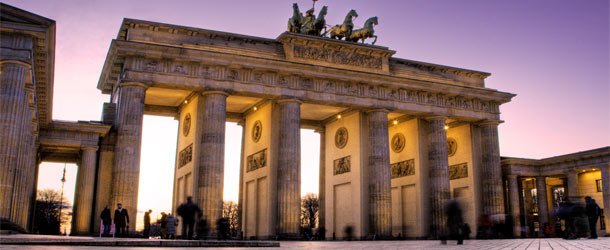At 680 miles long, the Elbe is one of Europe’s major rivers and crosses the Czech Republic and Germany, passing through a number of towns and cities before ending its journey in the North Sea. Though it isn’t located along the Elbe’s banks, Germany’s capital is a popular destination from which to begin your Elbe river cruise because it lies relatively close to the river and offers visitors a truly memorable city experience and a wealth of historical sites to discover.
First settled in the 12th century, Berlin is today one of the most populated cities within the European Union and has long played a major historical and political role in European affairs. It has been the capital of the Kingdom of Prussia, the German Empire, the Weimar Republic and the Third Reich and following the Second World War, was split, along with Germany itself, into East and West. During the Cold War, East Berlin became the capital of the German Democratic Republic and West Berlin became an exclave; cut off from the rest of the city by the infamous Berlin Wall until its fall in 1989. Today, the city’s a major cultural and scientific world player, making it an exciting and vibrant place to visit.
What not to miss
There’s so much to do in Berlin, and though there’s so much about the city that is future-facing, during your river cruise visit, you’ll surely want to visit as many of its most historical sites as you can. Here’s a look at just some of the must-sees.
The Brandenburg Gate
Though it was built in the 18th century, long before the Second World War, the Brandenburg Gate is forever associated with that period of Berlin’s history due to its location in the historic no-man’s land between East and West Germany. It was a former city gate which historically led to the palace of the Prussian monarchs rebuilt under the reign of Friedrich Wilhelm II as a neoclassical triumphal arch to symbolise peace, somewhat ironic considering its later use a symbol of Nazi rule. The fall of the Berlin Wall saw the gate become a symbol of peace once more however, and today, it remains one of Germany’s most popular landmarks.
Memorial of the Berlin Wall
Nothing is more of a symbol of the Cold War than the Berlin Wall, so a trip to the memorial is a must during any visit to the city. Today, a free visitor’s centre exists around this portion of the wall, which will help to give you a unique perspective on its historical role. Interestingly, there’s a tower which allows you to see this specially-preserved portion of the wall from above, which is accessible by lift or stairs.
Reichstag dom
The arson attack on the original Reichstag building was seen as a key historical moment in the formation of a Nazi party, so it was intended that the rebuilt building would have a much more positive association with the reunification of Germany. Today, the modern Reichstag building is one of Berlin’s top attractions, though you’ll need to pre-book a tour. It’s worth it, as you’ll get an interesting insight into the German political system before heading to the eye-catching glass dome, from which you can enjoy some great views of the city.
Berlin Cathedral
In reality, Berlin Cathedral has never been a cathedral in the religious sense, because it’s never been the seat of an actual bishop. That hasn’t stopped it from being one of the city’s most popular buildings for tourists to visit and it’s ornate exterior with its distinctive green domes, is a popular landmark. It’ll cost you a few euros to venture inside, but it’s worth it and the interior is even more spectacular than the exterior. If you’re up to it, you can climb the 200 steps to the top, where you’ll be able to enjoy a view to remember.
Pergamon Museum
There’s a huge choice of museums in Berlin and indeed, there’s even an area of the city called Museum Island and it’s here that you’ll find the Pergamon Museum. OK, this isn’t necessarily the place to go if you want to learn about German history but it is one of the most respected ancient history museums in the world. A visit will reward you with a look at the Ishtar Gate, which dates back to the times of ancient Babylon and not surprisingly considering the museum’s name, the enormous Pergamon Altar, or Altar of Zeus, which at a staggering 115 feet long, is impossible to miss.
By Simon Brotherton
Google



